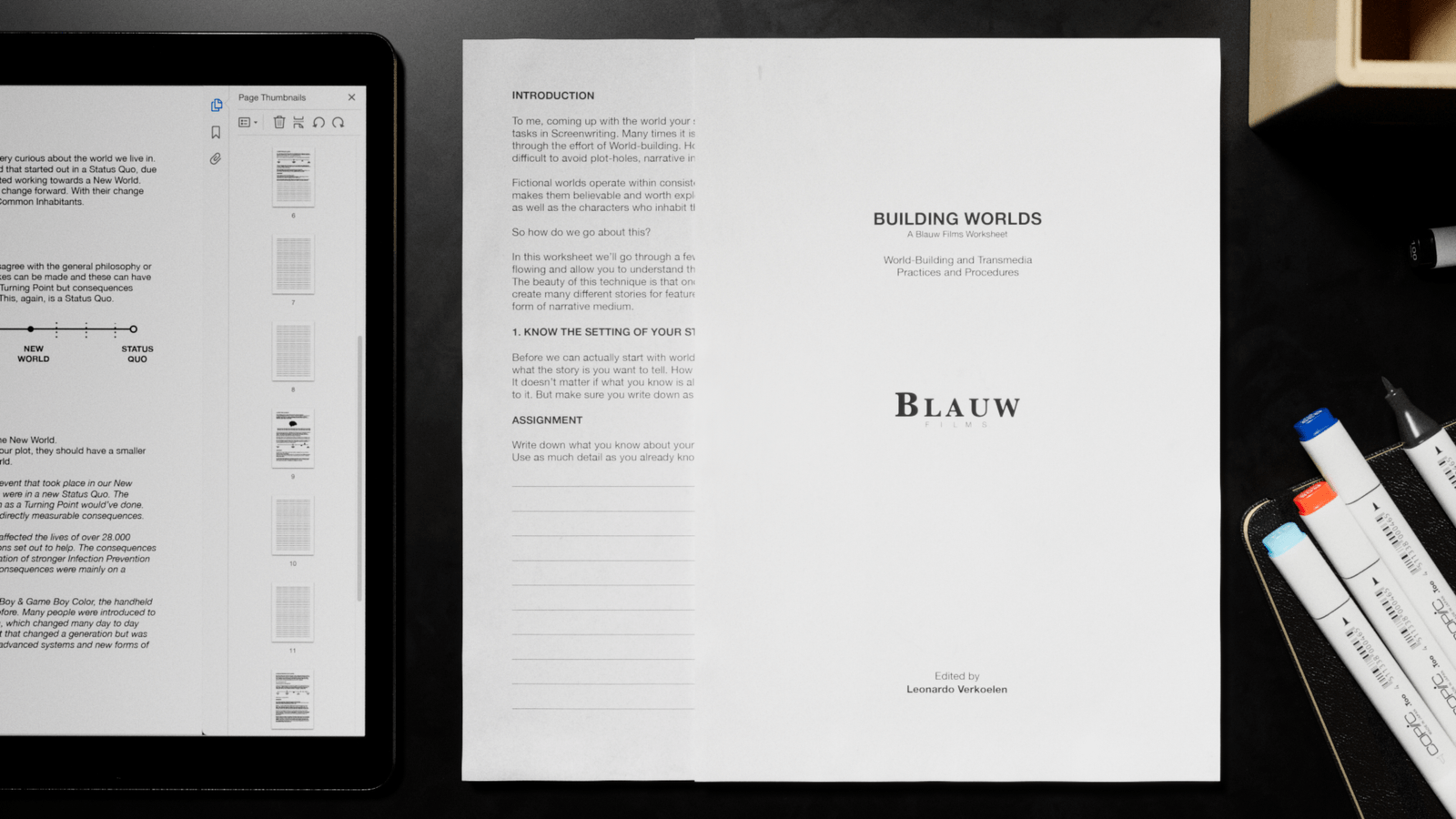A Beginners Guide on How to Properly Format Your Scripts
Realise your Dream Project
Blauw Films

You have an idea for a screenplay. You are envisioning a cinematic masterpiece that'll captivate audiences from Hollywood to Bollywood. But first there’s a crucial thing you need to know, and that’s how to properly format the thing. It doesn’t matter whether you are Aaron Sorkin or Quentin Tarantino, every writer at some point has had to learn how to format a script. Good formatting practices ensure that your ideas conform to industry standards, read well, and translate perfectly onto the screen.
There are various bits of software that do a lot of the heavy lifting for you and I will get into which ones I like to use later on.
FADE IN:
(That’s how you start your scripts!)
The Basics
A well-formatted script should be a joy to read but should also signal professionalism, so let’s start with the fundamentals: font style and margin sizes.
- Font: Courier, 12 pt
- Top and Bottom Margins: 1 inch
- Left Margin: 1.5 Inches
- Right Margin: It will just do its own thing! (Whatever software you use will handle the right margin so you don’t need to worry about it.)
(The margin sizes can vary slightly depending on the software you use, but this is a good rule of thumb.)
Page Count
Go as long as you deem necessary to tell your story, but for the sweet spot, you should be aiming for 90-120 pages, each representing approximately a minute of screen time. Every word should count and should drive the story forward. No one likes a film or a script that drags!
(You should take into account that an action heavy script will naturally tend to be shorter than one with lots of dialogue. I would advise to read scripts similar in genre or tone to what you plan on writing to get a good idea of the appropriate page count for your story.)
Scene Headings
Scene headings guide the reader through the setting and time and are crucial for visualising your story.
Standard format:
• INT./EXT. LOCATION — TIME OF DAY
Example: INT. CABIN IN THE WOODS — NIGHT
Action Lines
Action lines are your canvas, where you paint the scene. Describe with precision and flair, but remember, do not direct from the page! They have these (often rather annoying) people called Directors for that bit! Your words should evoke images and actions, not dictate the actors performance or the choice of camera shots. Don’t be putting, ‘Dolly tracking shot pushing in on left eye’ into your scripts! Even if it's a great shot in your head, no one will thank you for it!
Character Descriptions:
A character’s name and age appear in the Action Lines. CAPITALISE the name when it first appears. The age should follow the name in brackets… NAME (30).
Do not stress too much over the character's appearance or clothing. Something simple that encapsulates their personality is better than a full blown description of every aspect of their appearance and personality. Unless of course their appearance or clothing is absolutely fundamental to the scene, like a Ferrari racing driver who needs to be wearing a red race suit.
Character and Dialogue
The character’s name should be centred and in CAPITALS with the dialogue following underneath.
If the speaker is a voice over, or off screen then this should be formatted as follows:
- CHARACTER NAME (V.O.)
- CHARACTER NAME (O.S.)
Good dialogue should display a character’s personality and should crucially always move the story forward. Less is nearly always more. If you can write a scene, or convey a feeling or a moment without using dialogue, then do it!
Parentheticals and Transitions
Parentheticals should come in-between the characters name and the dialogue, or in the middle of a piece of dialogue to mark a change in tone (in Parentheses (obviously!)).
Use them sparingly. If you feel that a line really needs an additional prompt to highlight the tone, such as (angry), then maybe you need to work out why the scene is not clear about this being the natural tone. Having said that, I personally love using parentheticals and feel like it adds an extra dimension to reading scripts (even though scripts are written to be shot and performed, not read, but the modern industry is not as big a fan of them as me!)
Transitions should also be used carefully. The more the script flows, the better but, as long as you put your transitions in the right margin, sometimes you just need to…
Sound and Music
If sound and music are integral to your scene then put them in the script. Capitalise sound effects and be clear about the source of music, whether it's diegetic (within the world of the story) or non-diegetic (background score). But have a very good reason to do so. If a floorboard CREEKS, or a twig in the forest SNAPS, then whack it in in capitals!
Props and Special Effects
Key props and special effects should also be CAPITALISED when they first appear in the script, this is simply to help the respective departments keep track of what needs to be done or sourced.
Software
There is plenty of software that does (or almost does) all this for you.
I personally use Final Draft 12, which I would definitely advise you to get if you are writing regularly. But it’s definitely on the pricier side. When I started out I used the free version of Celtx and that did me just fine for years (other softwares are available)! Find what works best for you. You being comfortable whilst you write is paramount so you don’t suddenly lose your flow whilst having to faff around with some technical nonsense… but if a typewriter is your thing then so be it!
Note: Always write your scripts in the present tense.
Conclusion
Script formatting might seem daunting at first, but it's a critical step in bringing your cinematic vision to life, and once you know what you’re doing it’s easy enough. There are industry standards that if you don’t fulfil, no one is reading past the first page. But don’t worry too much, follow these guidelines, and, as these standards evolve over time, keep up to date with the current trends by reading as many scripts as you can, and remember, you're not just writing a story; you're an architect sketching out the blueprint.
Have you been formatting your scripts properly? Do you (like me) have an unhealthy penchant for parentheticals?!
Oh, and at the end you…
FADE TO BLACK.























%20by%20Ivan%20Aivazovsky.jpg)

















































































.jpg)




0 Comments